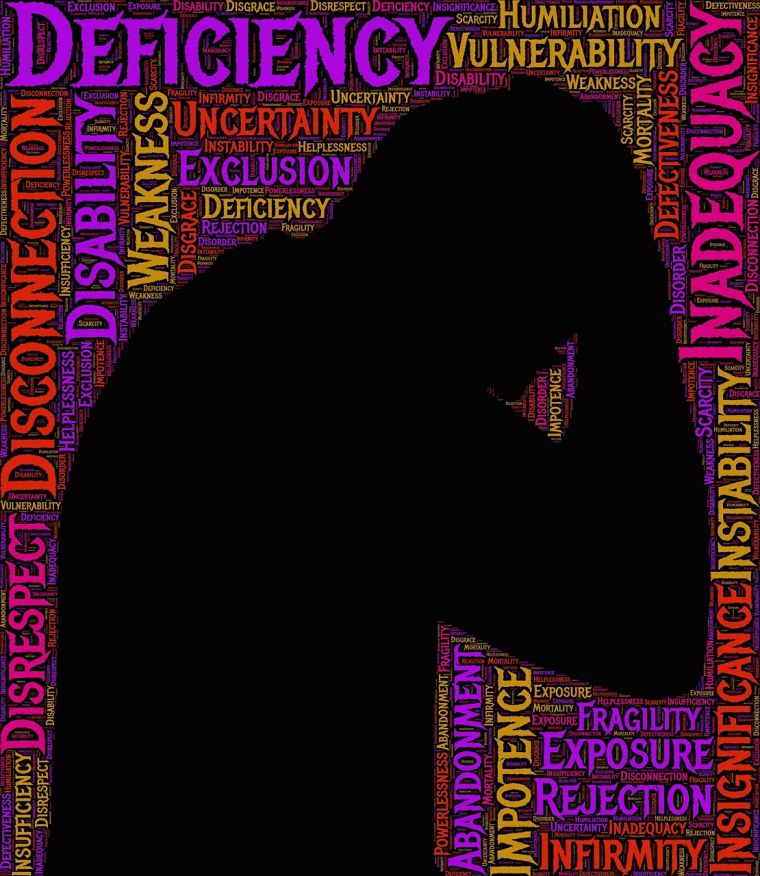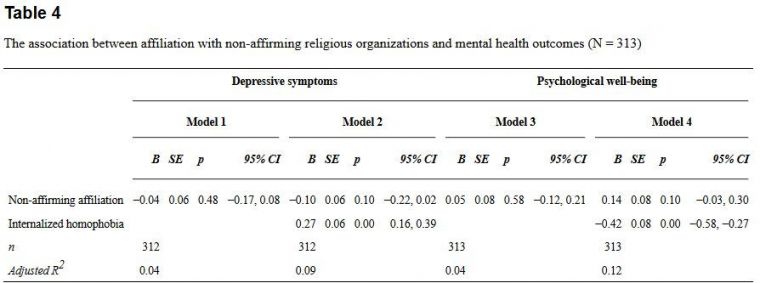Christianity, Homophobia And Mental Health: Peter Ould Answers Back To The Church Mouse

A piece authored by the internet blogger The Church Mouse on this site raised questions about my interpretation of the research of Barnes and Meyer in 2012 on the relationship between religious affiliation and mental health in the LGB community. My original piece was on Ian Paul's blog.
In this piece I looked at the quantiative data and the hypothesis models that Barnes and Meyer produced and tried to walk through what they did and didn't say about the link between religous affiliation, internalised homophobia (IH) and mental health outcomes (MHO). It is important to distinguish particualrly between the last two of these because they are not the same and to confuse them is part of the problem in interpreting the data from B&M 2013.
I would like to respond directly to the quote given from Barnes and Meyer, section by section. Barnes and Meyer write:
'Ould (2017) cites our research (Barnes & Meyer, 2012) to show that "LGB people do not have worse mental health outcomes when in 'non-affirming' church environments." In summarising our results, Ould misrepresents them. While we did not find an effect of religious affiliation on either depression or well-being, we found that unlike what is commonly observed, LGB people in non-affirming churches do not receive mental health benefits from religious affiliation, compared with those who never attend religious services in any setting.'
There is nothing in this that I disagree with and it is clear that we are talking at cross purposes. Barnes and Meyer and myself both agree that in their research there was no statistically significant effect of religious affiliation upon MHO. I made this very point myself in my original piece. What I also pointed out however was that the introduction of IH into the models for depressive symptoms and psychological well-being drastically reduced the p values of the 'non-affirming affiliation' marker, indicating that IH is the main driver of depressive symptoms but there is the 'possibility' of some amelioration of this effect by being part of a non-affirming affiliation.

This 'possibility' word is crucial. The p values are, in laymans' terms, the measure of how acurately the correlation found is a true relationship. Generally we look for a p value of less than 0.05, indicating 95 per cent statistical significance.
Values between 0.05 and 0.1 are not generally counted as statistically significant but they do give us hints as to what relationships and interactions might exist. In principle : p less than 0.05 = statistically significant relationship; p between 0.05 and 0.1 = not statistically significant relationship but an indication that there is more to explore here.
So in summary on the first paragraph from Barnes and Meyer, there is nothing here that directly contradicts anything I wrote a fortnight ago. If anyone wants to suggest that despite all this I have misinterpreted the models in Table 4, it is beholden on them to demonstrate that statistically, not to simply say 'the authors disagree with you'.
We continue:
'In fact, we found that LGB people who attend non-affirming religious settings have worse internalised homophobia compared with LGB people who attend gay-affirming religious settings and those who are not religious at all.'
I'm not sure why B&M raise this point as a critique of my piece since I explictly recognised this result when I wrote:
'The second model tells us that if you are affiliated with a non-affirming church that this affiliation is a far higher predictor of you having "internalized homophobia" than racial identity. Indeed, once you include the affiliation with a non-affirming church your race doesn't have a statistical impact on your internalized homophobia (evidenced by the p values of the B co-efficients being greater than 0.05).'
It is disappointing therefore to find in this quote from Barnes and Meyer a 'corrective' of my writing when I actually explicitly called out this very finding that Barnes and Meyer are highlighting. To point out something that I actually did point out myself and then use it as a stick to beat me with demonstrates a very low level of engagement with my piece.
Barnes and Meyer continue:
'The findings regarding depression and well-being should not mask the damage to LGB people's self-regard, which is manifested as internalised homophobia. We further found that the higher levels of internalised homophobia we found in Black and Latino LGBs, compared with White LGBs, was explained by the former groups' greater participation in non-affirming religious settings.'
Again, nothing that I wrote denied this. Barnes and Meyer were particularly interested in the effect of religious affiliation on certain ethnic minorities and I made this very clear in my piece. At the same time there were some none ethnic specific results (in Table 4) that were highly pertinent to the wide issue of the relationship between internalised homophobia, religious affiliation (past and present) and current mental health outcomes.
As regards the next section of their quote, I have not yet read Paul, Meyer, Teylan, and Schwartz (2014) so I cannot comment on that research. I will do so shortly.
'So to put it in simple terms, LGB people in "non-affirming" church environments have worse mental health outcomes than those in "affirming" church environments due to increased levels of internalised homophobia.'
This is the only point where I disagree with Barnes and Meyer based on their own research. When we look at their 2012 paper we see very clearly in Table 4 that their models do not support the statement above - the models are not statistically significant and cannot be relied upon to support the assertion. It may well be that other research supports this contention, but they have not provided any correlation models to show this. It is simply an assertion at this point - no evidence has been provided to support the claim.
Saying this is not a denial of the link between internalised homophobia and mental health outcomes - such a link is very clear from a large body of research in this area. Rather, the key issues for Christians, raised by the Oasis report, is whether church environments, past and present, are exacerbating factors in this link between IH and mental health outcomes. Barnes and Meyer's own research says 'no' as an answer to this, though other research may indicate other answers. That is why I wrote:
'It is clear that LGB folk do, on average, suffer from minority stress (for eg internalised homophobia) like many other minorities do and we should take that very seriously in our pastoral response. Barnes and Meyer (2013) would seem to suggest that rather than being at blame for that minority stress, non-affirming churches may actually help to relieve it. The Church of England has placed great emphasis on engaging with good scientific literature on issues around LGB pastoral concerns, as evidenced in both the Pilling and Shared Conversations processes. As Synod meets this week to discuss where we move forward on wider LGB issues, it's important to be open and honest about the research in key areas.'
I have been explicit in my writing on these issues in calling for more research on LGB mental health and relgious background / current affiliation. I have explicitly identified the link between IH and mental health outcomes amongst LGB youth. I have called out (from Gibbs 2015) that there is a clear statistically significant link between having non-affirming religious parents and current mental health outcomes for LGB youth. Why then does Mouse conclude his attack on me by writing:
'It defies logic to suggest that growing up gay in an environment where homosexuality is such a "hot button issue" would not impact on mental health outcomes. It also defies the testimony of the vast majority of the LGB community and empirical evidence. The most important thing here, however, is not to attempt to deny the facts, but to work out the best response.'
I'm really not sure who is guilty of 'denying facts'.
Conclusion
I'm afraid the piece by the Church Mouse is an exercise in politicking. Rather than engaging with the statistical analysis and the mathematical models in the research, what we got was almost a wilful misinterpretation of my piece, a blindness to where I said we could identify statistically verifiable links between religious background and current LGB mental health issues and an ignoring of the wider context of my blog. B&M 2012 was just one of the many pieces of research I cited in the wider context of the interaction between affirming and non-affirming religious affiliation and LGB mental health outcomes. I looked at a number of quantitative and qualitative pieces of research to draw together a more holistic view of these interactions. In response to my piece I explored another more recent paper (Gibbs 2015) which looks at different kinds of religious background (separating out the wider religious background of LGB young adults from close inter-personal relationships with non-affirming parents) and I wrote that there was clearly a link between the close parental relationships of 'anti-gay' religious parents and LGB teens and mental health outcomes in their young adulthood. If I was trying to deny any link between religious background and current mental health outcomes for LGB young adults, why would I point such a link out?
We need to do better than this. In 24 hours of being 'hated on' on social media, not one of my critics was able to tell me what I had actually misrepresented. I offered the tables of the mathematical models to everyone who criticised me based on Mouse's piece - I got not one response from anyone willing to engage with the actual research evidence but instead simply relying upon a single quote to engage in a witch hunt. When we disagree we need to engage directly with the primary sources - if someone is talking about a mathematical model and you disagree with their interpretation of it, refer to the specific mathematical model and explain why the interpretation is wrong. If we don't understand what we're disagreeing with, stay out of the debate.
I make it an absolute rule not to comment on any form of quantitative research until I have read the primary source and looked at the actual mathematical models (hence why I can't comment on one piece that Barnes and Meyer refer to). It seems that the overwhelming majority of those who took the opportunity to demean me over the past day have neither read Barnes and Meyer 2012 (or any of the other pieces of research I cited), let alone understand the mathematical models that we are discussing. I cannot over-emphasis how disappointing this is - pouring venom on someone for something that you haven't actually read is an incredibly low tactic. It is the triumph of dogma over evidence - it is poor journalism and it isn't terribly Christlike.
If in the Church of England we are going to have a serious discussion around LGB issues we have got to do better than this. We owe it to ourselves to have open and honest discussions about the research evidence in areas like LGB mental health, but as long as we continue to fight political battles like the one of the past 24 hours, as long as we selectively misinterpret material we don't like, as long as we attempt to offer comment on academic material we admit we don't actually understand, we are going to get nowhere.











